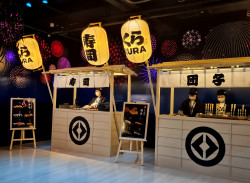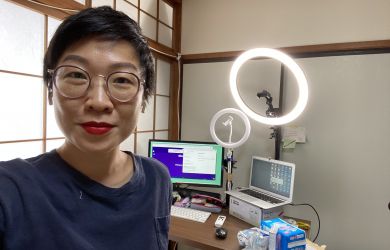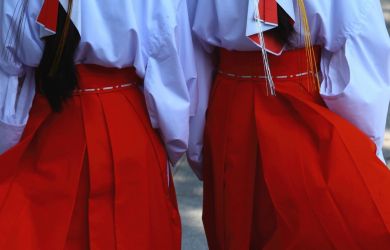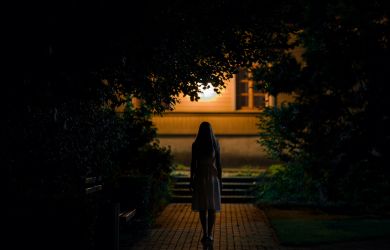
November 19, 2009
Kishidan
The yanki imposters walk a risky line between homage and parody
Originally published on metropolis.co.jp on November 2009
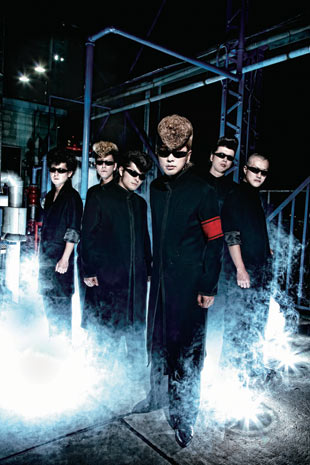
Courtesy of Avex Entertainment
When you’re imitating folks with a reputation for violence, it pays to be careful.
“The yanki themselves would come up to us after shows and say, ‘What do you think you’re doing?’” says Sho Ayanokoji, leader of rock band Kishidan, about the delinquent bosozoku motorcycle gangs who often adopt what’s known in Japan as the “yankee” look.
“They sometimes come looking for a fight and are like, ‘You’re parodying us, right?’” he explains. “But when we are able to actually explain ourselves, they’re cool with it. We tell them we’re clearly not criminals, but we love the look so we’ve always dressed this way. Then the talk turns to fashion and we usually end up friends.”
Since Ayanokoji is shielding his eyes behind dark sunglasses from the bright fluorescents in a Sony conference room, it’s hard to tell if he’s winking or not. But it’s true that for parody to be effective, there has to be an element of homage to it. Otherwise, it devolves into mere ridicule.
Growing up in the rural bosozoku hotbed of Chiba, Ayanokoji knows a thing or two about the yanki look. Key elements include the gakuran military-style school uniform and the oversized “regent” hairdo (known in the West as a pompadour). Ayanokoji was an avid collector of school uniforms as a kid, but it was only after a failed attempt to make it as a punk rocker that he came upon the look for Kishidan. This was in the mid-’90s, a time when melocore punk was peaking in Japan.
“I wanted to do something oshare, but it wasn’t working out,” he recalls. “In the countryside, punk seemed unique, but when I got to Tokyo everyone was playing it. It seemed pointless to do the same thing, which others were doing better anyway.
“Then I hit on the regent hairstyle and gakuran look I used to have in junior high, which was something I knew better than just about anyone. I thought it might look fresh exactly because it was already so unfashionable.”
Kishidan struck a nerve, not only with their punk rock peers, but with older listeners nostalgic for their hell-raising days. “It was a time when the band boom was ending and live houses were hurting for audiences,” Ayanokoji says. “There weren’t many bands in uniform, and the fact that we had this weird old-fashioned look made a stir. Even though we used to gig every other day, we gained a reputation for being able to fill the house.”
Kishidan soon found themselves being courted by major record labels. In a few short years, they were playing Tokyo Dome—as big as it gets in Japan.
Along the way there were many surprises, including their remarkable popularity with children. “It was completely out of the blue—we view ourselves as a bad influence!” Ayanokoji says with a laugh. “But for some reason, kids dug us. Maybe they like the uniforms and view us as some kind of superheroes. Three years ago we did a school festival tour, and mixed up skits with music. Members would undergo mock executions during the performance, and we could hear kids screaming—I was worried they would be traumatized.”
But at the peak of its fame in 2006, the band hit a wall. “When you’re together 365 days a year, the fun can go out of it,” Ayanokoji explains. “My staging is complex and involves a lot of rehearsal. The band wanted to focus more on the music and have time for recording. There were some differences of opinion, and it seemed that we were at the point of losing our sense of enjoyment, so we decided to give it a break for a while.”
Ayanokoji spent the subsequent three years exploring other persona he has created. With his outrageous DJ Ozma and Yajima Byoshitsu characters, he comes off as something like Japan’s Sacha Baron Cohen.
“I decided to show them what I could do outside of the band to reaffirm their faith in me,” he says. “That was when I created DJ Ozma, which actually began as an MC character during the Kishidan shows. In the end, it took three years for us all to get on the same page and realize this is what we most want to do.”
With their comeback underway and new music for the hit anime series Naruto reaffirming their centrality to Japanese pop culture, the next goal is overseas.
“We went to South by Southwest in 2005,” Ayanokoji says about their one venture abroad to the famous Texas music conference. “It was fun, but we weren’t getting along very well as a band. There were a lot of people there, but I feel like we could have put on a better show. I want another chance to show what we can do.
“Having been all over Japan I’ve seen how different it can be even in this small country,” he concludes. “I’ve learned a lot, and had amazing experiences thanks to this work. I’ve probably traveled more than most Japanese in their own country. But I’d like to travel the world as well. I want to see and do everything I can. I want to open every door possible—even if there’s something bad behind it.”
Kishidan play Countdown Japan 09/10 on Dec 29. Sayonara Sekai/Omae Dattanda is available on Avex.
“Countdown Japan 0910”
Four-day festival of J-pop and rock bands including Ryuichi Sakamoto, Kishidan, Kaela Kimura and many more. Dec 28-31, noon, ¥10,000 (one day). Makuhari Messe, Chiba. http://rijfes.co.jp/countdownjapan/
